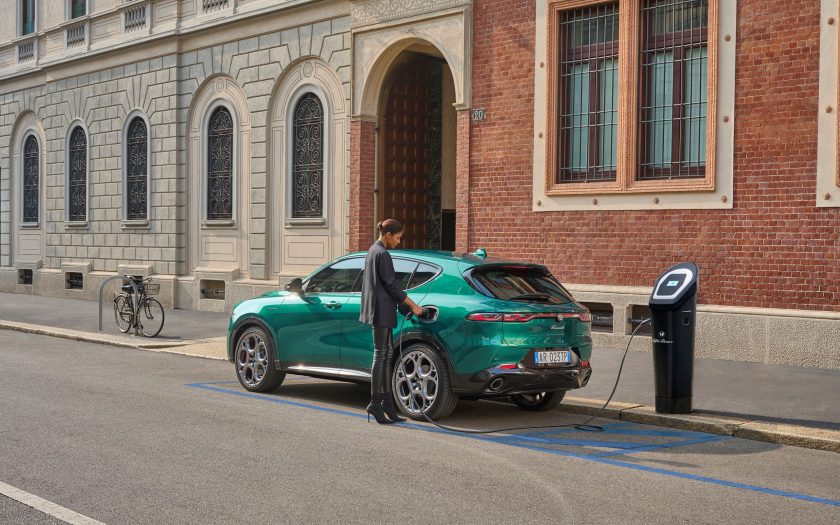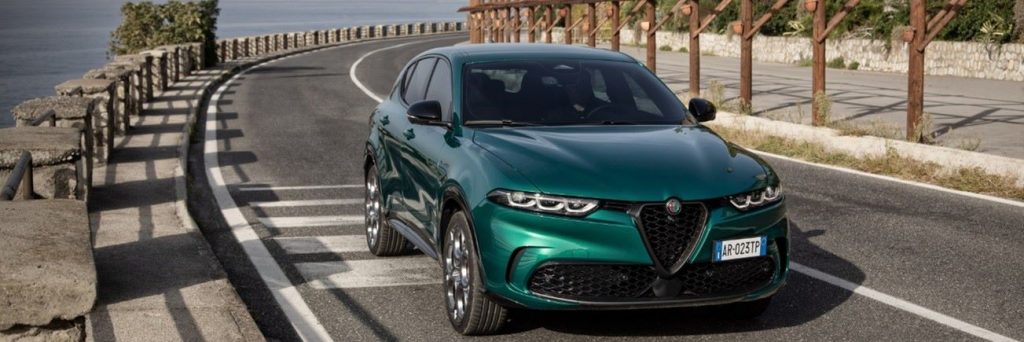Chris Riley tests the 2024 Alfa Romeo Tonale Veloce plug-in hybrid small SUV with pricing, specs, ride and handling, safety, verdict and everything the over-50 driver needs to know.
Summary: It’s a huge premium over the non-hybrid models, and most people will never recoup the cost. But the Alfa Romeo badge and feel is a huge incentive.
2024 Alfa Romeo Tonale Veloce small SUV
Pricing: $78,500 (plus on road costs)
Options: metallic paint $1600, special premium paint $2500
Warranty: Five-years, unlimited km, five years roadside assist
Safety: 5-star ANCAP (tested 2022, expires 2028)
Engine: 1.3-litre turbo four-cylinder petrol engine, single electric motor
Service intervals: 15,000km/12 months
Power: 132kW @ 5750rpm (petrol). 90kW (electric) 206kW (combined)
Torque: 270Nm @ 1850rpm (petrol). 250Nm at 1850rpm (electric)
Battery: 15.5kWh lithium ion
Transmission: six-speed automatic, four-wheel drive
Body: 4528mm (long); 1835mm (wide); 1614mm (high)
Luggage space: 385 litres
Build country: Italy
Weight: 1835kg
Towing capacity: 1500kg
Wheels: 19-inch alloy
Tyres: 235/45R19
Spare wheel: repair kit
Ground clearance: 142mm
Turning circle: 11.6m
Fuel tank: 43 litres
Thirst: 1.5L/100km (unleaded 95 RON)
Electric-only range: 61km (claimed)
Consumption on test: 7.6L/100km (330km)
seniordriveraus consumption on test: 4.0L/100km (360km)
[review]
Alfa’s top of the line Tonale SUV is a plug-in hybrid and costs nearly $20,000 more than its nearest stablemate.
For this money, you get a vehicle that can run on electricity alone for a distance of up to 60km
Named after a mountain pass in Northern Italy, it is a little brother to the mid-sized Stelvio – but like Stelvio can seat five.
Tonale sits on the same platform as the Jeep Compass and a re-badged, re-styled version is also sold as the Dodge Hornet in the United States.
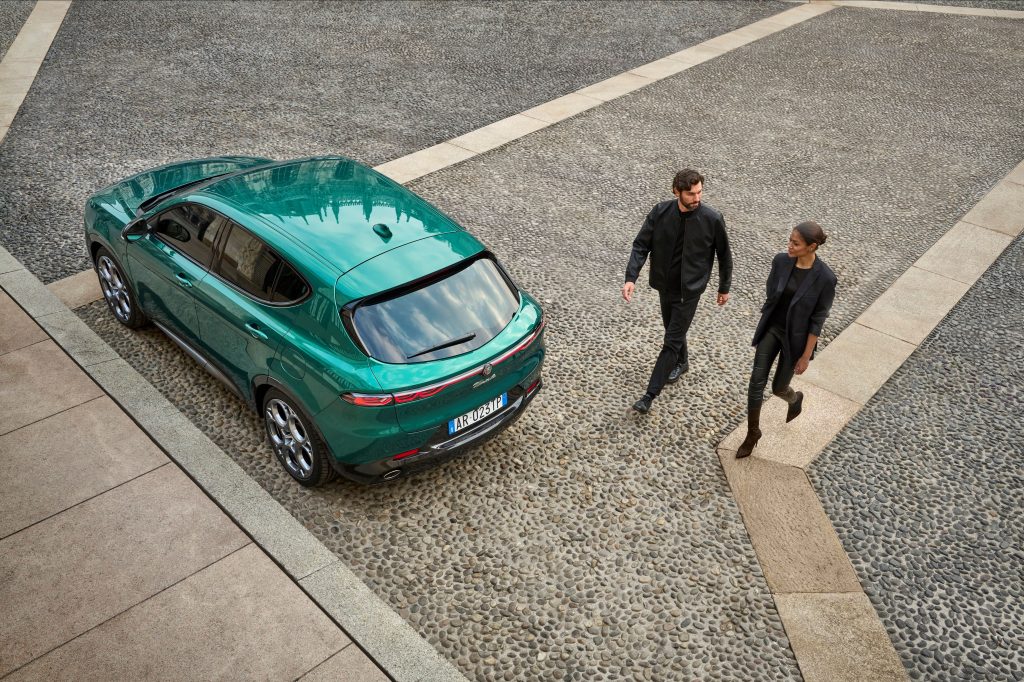
What’s it cost?
It’s not surprising that the Alfa Romeo Tonale has quickly become the best-selling model offered by Alfa Romeo.
It looks pretty much the same as the Stelvio, but is smaller and therefore cheaper.
Buyers are a fairly predictable lot.
Prices start from $50,900 for the 1.5-litre Ti, $58,900 for the Veloce or $78,500 for the Veloce PHEV AWD.
Metallic paint adds $1600; special premium paint $2500.
Both the Ti and better-equipped Veloce are the more common, self-charging hybrids, with drive to the front wheels.
The PHEV as its name suggests is a plug-in hybrid electric vehicle with drive to all four wheels, and can be charged from an external power source.
Standard features include a sunroof, full LED matrix headlights with adaptive driving beam and dynamic turn indicators, Miron dark grille and body kit, privacy glass, Brembo red brake calipers, active dual-stage valve suspension and 19-inch diamond cut alloys.
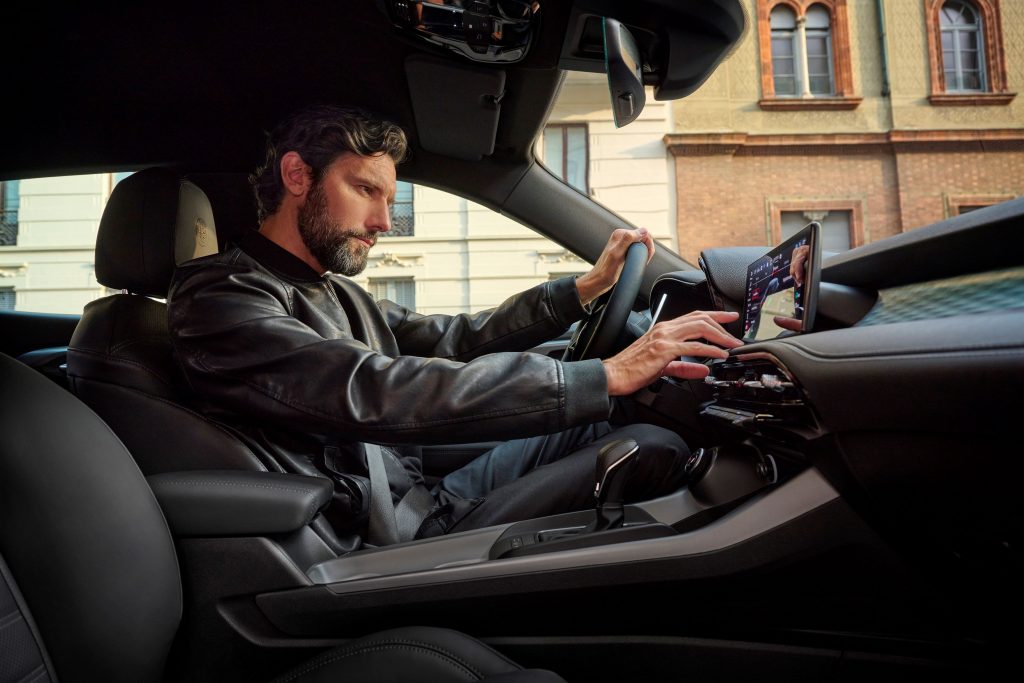
Inside there’s perforated black leather-accented seats with the embroidered Alfa Romeo logo, dark grey double stitching on the seats and interior accents, aluminium door sills, gear shift paddles and pedals.
The front seats are powered, heated and ventilated and the steering wheel is also heated.
The PHEV comes with an all-new infotainment system, with a 12.3-inch instrument cluster and 10.25-inch touchscreen, with AM/FM/DAB+ digital radio, satellite navigation, wireless Apple CarPlay and Android Auto and 14-speaker Harman Kardon audio.
There’s also wireless phone charging and front and rear USB A/C ports and 12-volt outlets in the front and cargo area.
With the My Alfa Connect app users can remotely access their vehicle using their mobile phone, to access services such as vehicle finder and remote operations.
Five-star safety includes six airbags, a rear-view camera and autonomous emergency braking (AEB) with vulnerable road users.
There’s also adaptive cruise control with stop and go, forward collision warning, lane support system (lane departure warning + lane keep assist), driver drowsy detection, traffic sign recognition with intelligent speed assist and tyre pressure monitoring.
Colours available in Alfa White, Alfa Red, Alfa Black, Vesuvio Grey Metallic, Misano Blue Metallic and Montreal Green Tri-Coat (Veloce only).
The Tonale is covered by a five-year unlimited kilometre warranty, with five-year roadside assistance. Service intervals are 12 months or 15,000km.
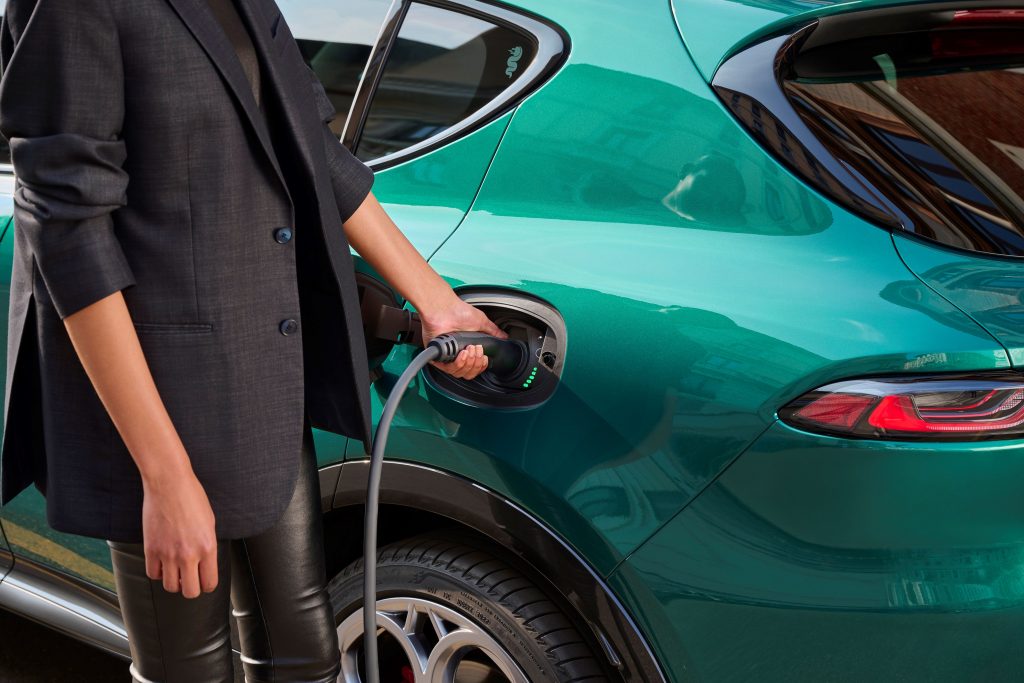
What’s it go like?
The standard 1.5-litre hybrid produces 118kW of power and 240Nm of torque.
The dash from zero to 100km/h takes 8.8 seconds, it takes premium 95 unleaded and uses a claimed 5.6L/100km.
Tonale Plug-In Hybrid Q4 combines a 1.3-litre four-cylinder turbocharged petrol engine with an electric motor, that puts out 132kW/270Nm from the engine and 90kW/250Nm from the electric motor — for a combined figure of 206kW.
Zero to 100km/h arrives in 6.2 seconds, it can run on electric power alone for up to 60km (WLTP) and overall fuel consumption is an ultra-low 1.5L/100km.
Transmission in the PHEV is via a conventional six-speed auto, with an odd set up that sees the petrol engine driving the front wheels, while the electric motor powers the rears wheels — effectively providing all-wheel drive.
It’s equipped with a 15.5kWh lithium-ion battery, with a 7.4kW on-board AC charger and Type 2 charge port.
This enables the car to be charged at home or from a public AC charge point, taking about 2.5 hours to fully charge.
It is supplied with a Mode 2 charging cable.
For home charging from a standard power point, you will need to purchase an additional cable.
There are large shift paddles to facilitate manual gear changes plus four drive modes: Advanced Efficiency, Natural, Dynamic and ESC OFF.
A regenerative braking system recovers energy during passive driving phases (such as deceleration or light braking).
Additionally, the system switches to Natural mode when the battery reaches the minimum charge level regardless of the selected mode.
That’s it for the figures.
The bit they don’t tell you is that to achieve 1.5L/100km, you have to charge the battery each and every time it is depleted.
Otherwise, fuel economy will be more like a conventional vehicle (and it was).
We couldn’t be bothered charging the car and as a result recorded 7.6L/100km after 330km of mixed driving – some of it rather enthusiastic.
That’s still not bad, but not as good as the standard hybrid which returned 6.8L when tested.
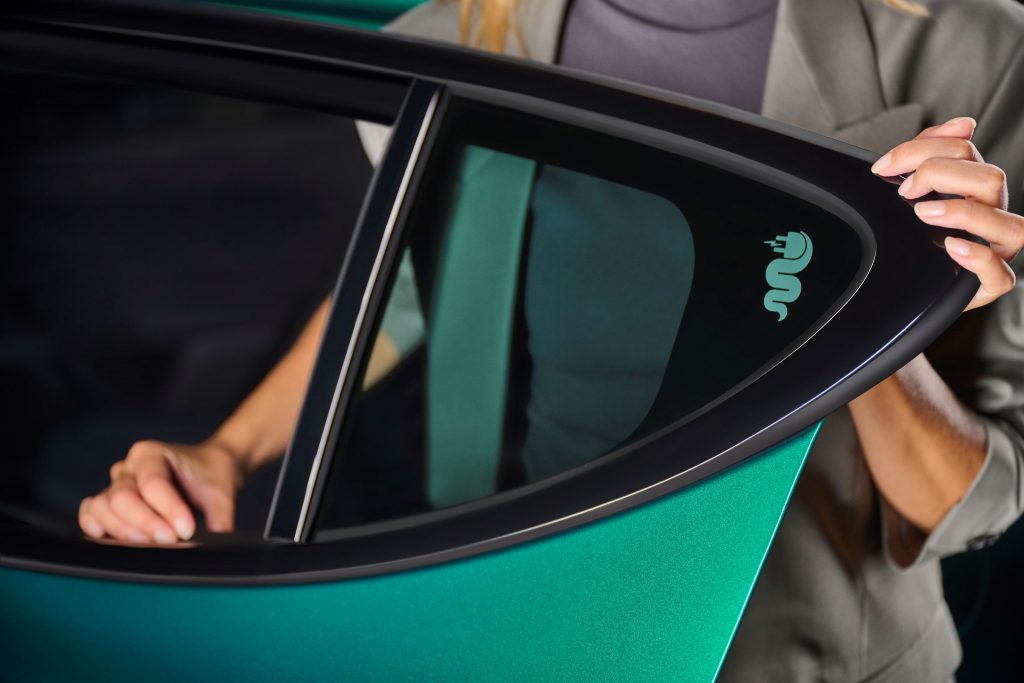
Back in October, when we drove the Ti, we found it a little lacking in the excitement department.
And initially, after punting the PHEV around the neighbourhood for a day, it felt like we were in for more of the same.
That is until we discovered the magic of the DNA switch and Dynamic mode which brings the car to life.
As we headed down a favourite drive route, the sound of the engine suddenly became apparent and the throttle grew responsive, accompanied by a nice jolt to underline the point.
This was more like it.
The PHEV develops 208kW of power versus the Ti’s 118kW, so you’d expect it to be somewhat more responsive, but bear in mind it weighs another 300kg.
You’d think that once the battery had run out, the electric motor would no longer function, but apparently this appears not to be the case.
According to the system, the rear wheels were still receiving power – from where we’re not sure.
Mind you, the energy recuperated from braking had added 10km of electric range.
Later, with nothing left, the system graphics still showed the rear wheels as active.
Go figure…
The Tonale is smaller than the Stelvio and this shows in the amount of rear legroom and boot space available.
Lithe, young things may find the rear seat generous enough, but the majority of us “full-size” oldies could be cramped.
Either way, it’s a better fit for two people than three.
Up front, the driver seat feels snug but comfy, with plenty of lateral support from the bolsters, but the large doors swing closed easily on an incline, threatening injury.
The driver footrest is narrow and angled towards the accelerator, compromising comfort.
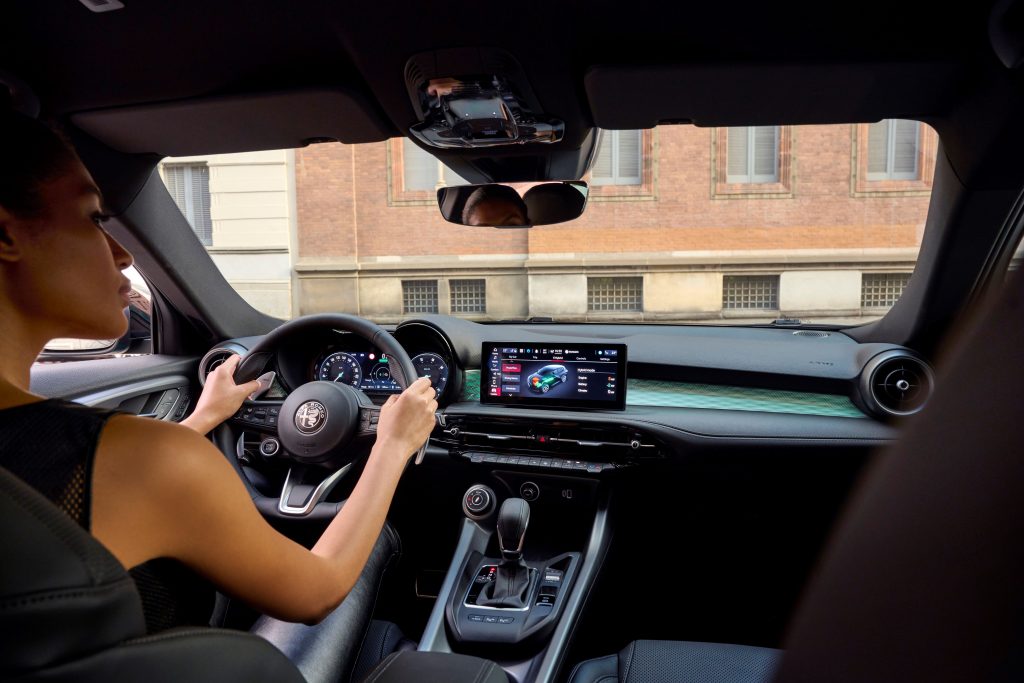
The instrument cluster is fully digital and can be configured, but lacks the fireworks of competitors.
Head-up display is conspicuously absent.
The boot is smaller in this model too because of the placement of the electric motor and battery pack.
Luggage space drops from 500 to 385 litres and the space saver spare makes way for a tyre repair kit.
As well as drive modes, DNA also offers different settings for the suspension, with a choice between sport and comfort.
Further investigation revealed the Tonale was engineered with a quick steering rack to lift the driving experience.
It also features brake-based torque vectoring and frequency-selective dampers as standard, along with four-piston Brembos for the Veloce.
In Dynamic mode with the suspension set to sport, ride and handling are near perfect.
The car feels solid, grounded and connected, the steering is sharp and responsive and it turns into corners with minimal effort.
A smidgen more brake feel would be welcome though.
Most importantly, it’s fun to drive.
Good job, Alfa.
What we like
- Looks great
- Well equipped
- Respectable fuel consumption
- Better performance than 1.5-litre hybrid
What we don’t like
- Too costly
- A bit tight inside
- Driver footrest cramped and angled
- Gap left by adaptive cruise too large
- No head-up driver display
- Android Auto connection keeps dropping out
- DNA housing becomes hot to touch
- Wireless charge pad made our Pixel phone hot
What over-50s need to know
The Tonale is a compact, stylish SUV that will appeal to older drivers.
The price probably won’t.
Price considerations aside, PHEVs simply aren’t suited to Australia where a range of 60km is a drop in the ocean.
In Europe, you can pop down the road for coffee in another country, but it wouldn’t be sufficient to get us into the Sydney CBD – let alone home again.
The extremely limited electric range tends to make the whole recharging regime a tiresome, unproductive exercise and one that most people will probably ignore in the long run.
And without religiously recharging the battery, claims of 1.5L/100km are simply pie in the sky.
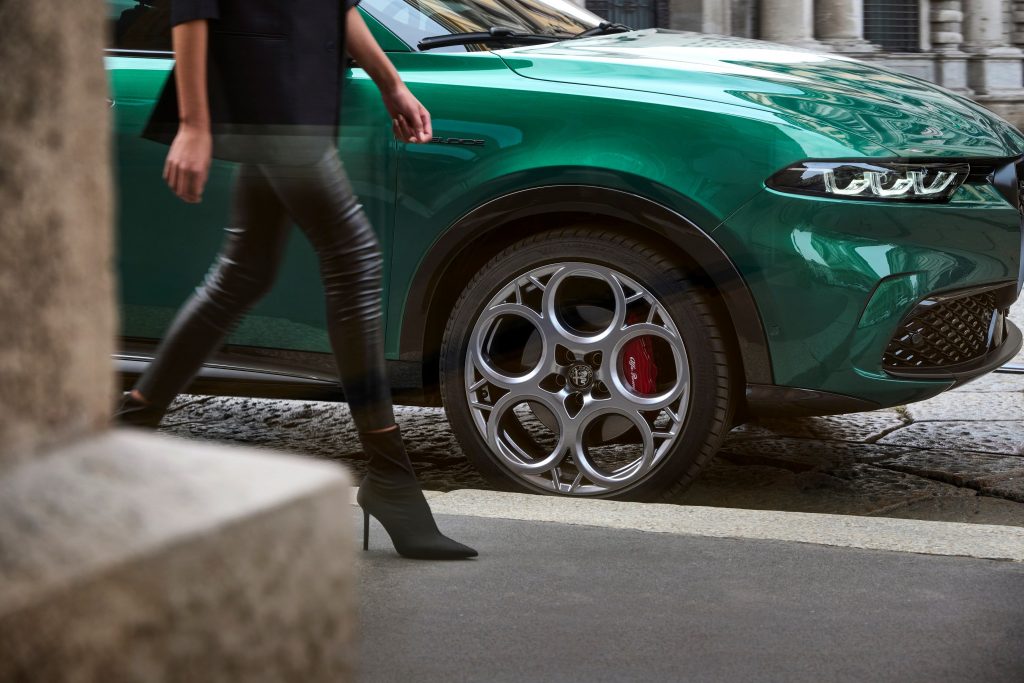
seniordriver comments
The Alfa Romeo Tonale apparently has something for everyone. We were less than thrilled with the lackadaisical performance of the Ti, perfectly satisfied with the Veloce petrol version and completely bemused by the PHEV.
Chris is right; most people will faff about with the charging system for the first month or so, and then drive it like a normal car, completely forgetting to charge it overnight or after any outings. We were fairly assiduous with our charging regime, and managed a consumption figure that sat right in the middle between Alfa’s claimed 1.5L/100km and Chris’ rather thirsty 7.6L/100km. But it was fiddly and annoying. We travelled 150-odd km on petrol power, and 210km using electric power.
Of course, 60-odd kilometres will get you to the shops and back under most circumstances. And adding this to the 404km range when using petrol makes a compelling argument.
As usual, charging times varied wildly from those claimed by the manufacturer. For some reason, the car we tested had a cable that plugged in to a home power point (or a heavy-duty extension cord, at least) but from zero to 100 percent was taking 7 hours and 13 minutes.
The real issue with the Tonale PHEV is the price (made even worse if you choose a metallic or premium paint finish). Quite simply, a $20,000 premium (or almost $30,000 over the entry Ti) for the PHEV over the Veloce is not justifiable, and for most people, simply not going to be recouped. Let’s face it, $20,000 buys a lot of fuel!
With the electric motor powering the rear wheels and the 1.5-litre engine driving the front wheels, the Tonale is effectively four-wheel drive. Most owners won’t notice or care.
All round, the Tonale PHEV is a stylish little car, practical for most people and will impress the neighbours when you park it in your driveway. And that, quite simply, is all that will matter to most buyers.
